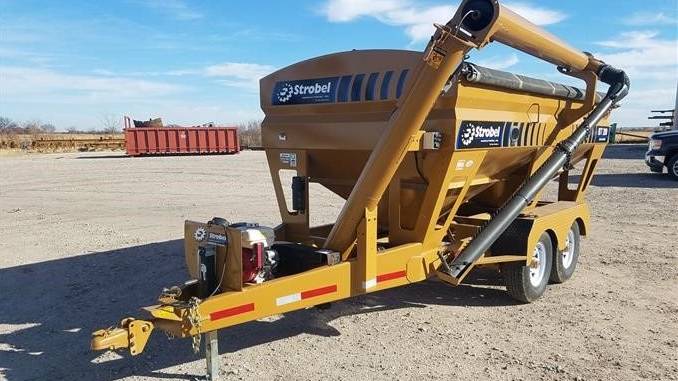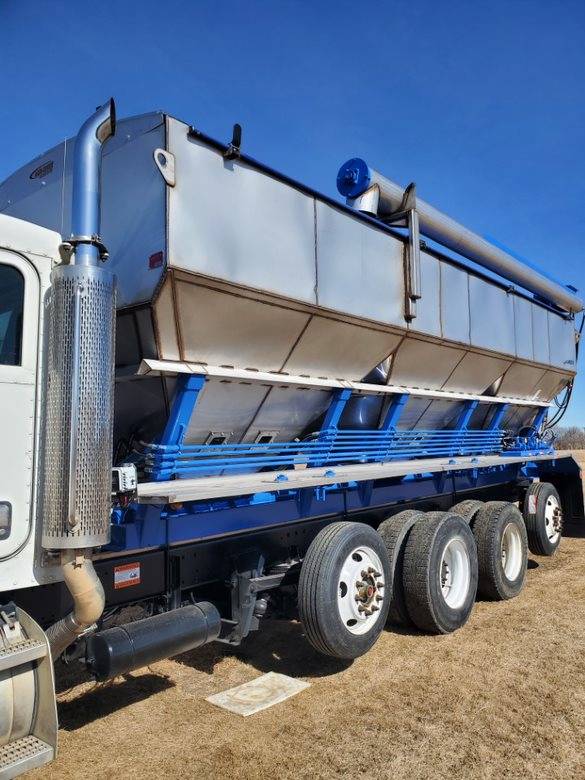Fertilizer and Seed Tender Manufacturers Expect a Strong 2023 Growing Season
At a time when much of the world faced supply chain challenges, increased costs, and labor shortages, fertilizer and seed tender manufacturers, while not completely unscathed, saw a relatively healthy 2022 and expect a strong 2023.
“It seems most operations are finding a seed tender to be essential — it’s such a fast-paced time of the year that every hour is critical,” says Larry Myers, Marketing Manager, Strobel.
With agricultural supply chains assaulted on multiple fronts from a variety of black swan events it would be natural to assume tender manufacturers faced their own challenges. But when bumps did occasionally arise, the company was able to maneuver over them, Myers says.
“[There were] no big surprises,” he says of the 2022 growing season. “Even with some supply chain challenges, we were able to get Strobel Seed Tenders to anyone who needed one.”
That sentiment was shared by other tender manufacturers.
“Our expectation for the 2022 growing season were that it was going to be a good year for growers, which typically translates into a strong selling season,” says Jon Simonsen, General Manager, Simonsen Industries Inc. “Strong commodity prices and relatively favorable weather patterns supported these expectations.”
Some of those supply chain disruptions (war in Ukraine and lingering Covid concerns) continue and the world is learning to navigate these challenges.
“2020 introduced a new climate featuring words such as ‘delays,’ ‘allocations,’ and ‘shortages,’ says Lydia Peterson-Salcedo, Chief Operations Officer, Quickveyor. “We have learned to be proactive in managing these new challenges, even if it means throwing lean manufacturing out the window. Our customers have felt very little of these impacts as we have worked extremely hard to supply the demand and coordinate with our distributors to keep the Quickveyor build schedule on time.”
Having product available is certainly a key, but so it ensuring a healthy distribution network.
“Some manufacturers are having problems delivering, and we’ve seen our Strobel Dealer network pre-ordering and stocking so they can effectively serve their customers,” Myers says. “We anticipate a great 2023!”
Trends
Customers are asking for “larger seed tenders are more and more essential,” says Matt Hays, Sales and Productions, Hays LTI.
The size of tenders isn’t the only change. Strobel offers a variety of configurations to address varying crops and conditions.
“We’ve continued to make subtle changes with our rubber gaskets and stops on the Lo-Profile Box tenders,” he says. “We currently have 16 models of skid, box and bulk tenders . . . one for any and every operation.”
Simonsen, too, says changes to tender technology fall more into the tweak category rather than overhauling.
“Tender technology has not changed significantly over the past several years,” he says. “We have continued to make incremental changes to our equipment lines to refine existing designs to improve tender performance and ease of use.”
In addition, Simonsen sees two other factors influencing how tenders are used: “The two most influential items driving the tender marketplace currently are the push to increase operator safety and also the shortage of qualified drivers available during the fertilizer season,” he says.
While the devices themselves don’t see major overhauls year to year, the way they are being used does evolve.
“The role of tenders remains constant, but the needs of our customers do change over time,” Simonsen says. “Moving as much fertilizer as quickly and efficiently as possible is the ultimate role of any tender. Our designs have been changing to continue to fill this role with an eye toward safety for the operator.”
Operator comfort and safety are key, Hays agrees.
“Safety features and designs are a major part in building any heavy-duty equipment,” Hays says. “We are constantly checking our drawings and plans from an engineering standpoint to address ways we can provide a smooth operating experience for our customers. Customers in the tender market want tenders that have higher capacity, easier and faster unloading, and the ability to operate safely on the road and in the field. The equipment our customers get from us checks those boxes, and we are constantly improving.”
Opportunities, Challenges
While Simonsen, Quickveyor, and Strobel expect 2023 to remain strong there are some possible hinderances ahead.
“A few of the biggest challenges to the tender market today include the increased cost of materials, shortages of key components, and rising interest rates,” Simonsen says.
Hays LTI experienced those same challenges.
“There were many challenges felt throughout the market in the past two years,” Hays says. “Supply chain shortages were the main things that we had to work to mitigate. We saw components, steel, and other supplies skyrocket in cost while also being more difficult to acquire. These effects were felt by everyone across all industries.
“The current issues the tender market faces right now seem to be the common issues faced across our economy,” continues Hays. “We are fighting as hard as we can to mitigate the effects of inflation and how that trickles down to our overall cost to manufacture and operate. Luckily, we have a great purchasing team, and our vendors have been vigilant in helping us tamp down these input costs, which is good for everyone in the long run.”
While some operations have faced labor issues, that’s one area Quickveyor has been able to avoid.
“The workforce has been widely talked about this year,” says Peterson-Salcedo. “We at Quickveyor are fortunate to have a very dedicated and loyal group of employees that have been with us since the beginning of Quickveyor in 2000. This creates product-built consistency and allows us to feel less of the workforce challenges faced by others in our industry due to the lack of available workforce.”
Looking Ahead
“We expect the 2023 season to be relatively strong,” Simonsen says. “If the Midwest gets the snowfall and colder temperatures predicted, we could see a later spring and a hectic spring fertilizer season. Component parts have been and continue to be an issue,” Simonsen says. “It would be wise to do the spring maintenance on equipment earlier than normal to allow for additional time to secure parts that are in short supply.”
Planning is key.
“The number of early orders that we have for the 2023 season is indicative of things being as busy as ever,” Hays says. “We are expanding our production capacity and chopping away at lead times to make sure our tenders are delivered on time and ready to go to work. We are excited that we, once again, get to expand our footprint and for the opportunity to work with our customers and provide them with the best equipment available.
“However, no one should be surprised that the agriculture industry persevered and even thrived through adversity again,” Hays continues. “That unlikely success is all due to the hard-working people involved in the ag industry, and we couldn’t be happier to have the opportunity to work with them.”








